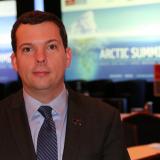Op-Ed: The Arctic and Sustainable Development Goals

The Finnish Chairmanship of the Arctic Council is underway, with a clear commitment by Finland to advance sustainable development and climate change goals. However, "sustainable development" can be a tough term to implement.
At some level, everything can be included under its umbrella, but most importantly it describes addressing issues that intersect with people. In particular, Finland’s interest in the U.N. Sustainable Development Goals raises interesting questions about the Arctic in relation to the “developing” world.
The Institute of the North convened a strategic planning session in 2012 for Alaskans to contribute their perspectives to the themes and issues to be addressed by the U.S. as Chair of the Arctic Council. Not surprisingly, the top two priorities that emerged were related to sustainable development – healthy, resilient communities and economic development.
Alaskans who participated in the workshop were clearly anticipating work that advanced and balanced community development, ecosystem health, economic opportunities and the inclusion of and respect for indigenous peoples. The U.S., during its Chairmanship, went a long ways toward meeting this goal, including "Improving Economic and Living Conditions" as one of its Chairmanship lines of effort. Indeed, “sustainable development” was an overall winner during the U.S. Chairmanship, with projects that addressed water and sewer, suicide prevention, renewable energy, micro-grid operations, scientific cooperation, and local environmental observation.
The Finnish Chairmanship, which has the opportunity to build on this, has strengthened the Arctic Council’s position on sustainable development by pointing to the U.N. Sustainable Development Goals (SDGs) as its guideposts. Finland’s Chairmanship platform states that, "The human dimension of the Arctic Council's work covers such areas as health, water, energy, infrastructure, and indigenous cultures and languages, and thus contributes to the implementation of the Sustainable Development Goals (SDGs) of the United Nations 2030 Agenda. Finland proposes to explore how the SDGs can be further used in strengthening the economic and social progress and cultural self-expression of Arctic communities."
Within an Arctic Council context, this will mean projects led by Finland and other Arctic states that intersect with the human dimension – that change the living and economic conditions of people who live in the Arctic. It remains to be seen what kinds of metrics are used in relation to the SDGs, or what the role of the UN will be in recognizing or leveraging the Arctic Council’s contribution.
While the SDGs are well-known in the developing world and in development (international financial and technical assistance) circles, there is little awareness in higher-performing economies, including those spanning the Arctic. Arctic states aren’t generally considered "developing" and most fall outside the scope of development guidelines, even though for the majority their Arctic regions are challenged in similar ways. The SDGs are arguably intended for development in a different context than that found in the Arctic, though their applicability under the right circumstances is considerable.
This was the conclusion of a small group working session in Alaska in April, which the Institute of the North and Guggenheim convened. Our intent was to review the SDGs from an Alaska and Arctic perspective and to think through how a broader Arctic sustainable development agenda might fit within their framework and how Alaskans can contribute to shaping that process. There were key takeaways:
- Much of the language used within the SDGs is foreign to or not representative of the Arctic, including in their lack of an indigenous voice
- Many of the SDGs need work to incorporate an Arctic context and accommodate Alaskan understandings of, for instance, poverty and hunger or health and wellness
- The SDGs are lacking concepts of local control, sovereignty, self-determination and feel very top-down
- A holistic approach is necessary for sustainable communities and each community may have their own approach
- Alaska can be proud of many things we do well, and we can share solutions based on real world experience with others around the globe/Arctic
- The SDGs provide us with a framework that is globally agreed upon and which might enable new and different conversations to take place
In the coming months and throughout the Finnish Chairmanship we can work toward a more rigorous and detailed understanding of the SDGs in an Arctic context. The SDGs cannot be applied to the region without this, though they provide good direction and serve to keep a focus on the human dimension of the Arctic.

